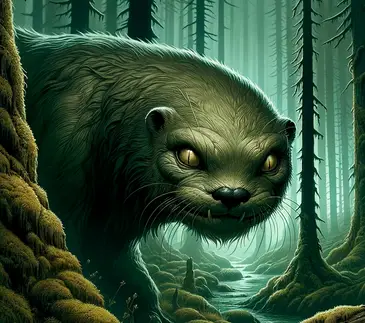It is no wonder that the state of Alaska is the setting for numerous urban myths and legends. These tales, ranging from the plausible to the supernatural, not only add to the mystique of the Alaskan landscape but also reflect the unique culture, history, and challenges of life in the far north. This article explores some of the most commonly thought-of urban myths in the state of Alaska.
The Alaska Triangle
Similar to the Bermuda Triangle, the Alaska Triangle is an area stretching from Juneau and Yakutat in the southeast, up to the northern Barrow, and back down to Anchorage. It is infamous for a disproportionately high number of disappearances of planes, ships, and people. Stories attribute these mysterious vanishings to a variety of causes, including vast wilderness, harsh weather conditions, and even supernatural forces like vortexes that lead to other dimensions or territories haunted by spirits.
The Kushtaka
Originating from Tlingit and Tsimshian folklore, the Kushtaka or Kooshdakhaa are shape-shifting creatures that can take the form of otters, humans, or a combination of both. These mythical beings are said to lure people away from safety with either cries that mimic those of a baby or with deceptive human voices, leading them into the forest or to the water to turn them into Kushtaka. The legend serves as a cautionary tale against wandering off alone and highlights the dangers of the Alaskan wilderness.
The Ghosts of the Klondike Gold Rush
The Klondike Gold Rush of the late 19th century brought thousands of prospectors to Alaska and the Yukon in search of fortune. With this influx came stories of ghostly encounters in the abandoned mining camps and towns. Skagway, one of the key entry points to the goldfields, is rumored to be haunted by the spirits of those who lived and died during the gold rush era. The most famous ghost is that of Soapy Smith, a notorious con man and gangster who met his end in Skagway.
The Aurora Borealis Spirits
The Northern Lights, or Aurora Borealis, are one of the most spectacular natural phenomena visible in Alaska. Indigenous cultures have long held beliefs about the spirits of the lights. For example, the Inuit believed that the lights were the spirits of the dead playing soccer with a walrus skull. Other interpretations suggest that the lights are the spirits of animals or loved ones communicating from the afterlife. These beliefs underscore the deep connection between the natural world and spirituality in Alaskan indigenous cultures.
The Vanishing Lake Monster of Lake Iliamna
Lake Iliamna, Alaska’s largest lake, is said to be home to a mysterious lake monster known as Illie. Sightings of Illie describe the creature as a giant fish or aquatic reptile, drawing parallels with other legendary lake monsters like Nessie of Loch Ness. Though evidence of Illie’s existence remains anecdotal, the stories persist, adding a layer of mystery to the already enigmatic landscape of Alaska.

